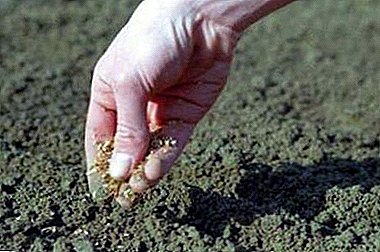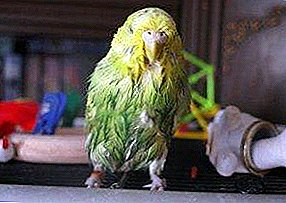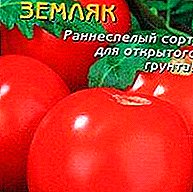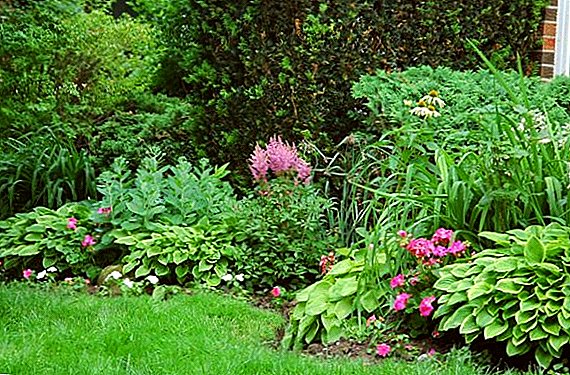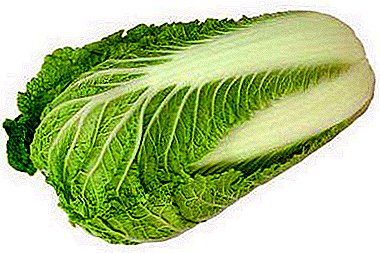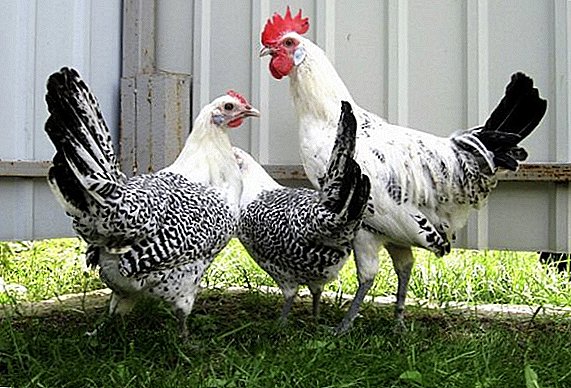 In our article we want to tell you about one unusual variety of chickens, which is recognized as the oldest breed in Europe. Due to the beautiful plumage and high productivity, the Ostfriz gull breeding chickens for several centuries have been the main suppliers of dietary meat and nourishing eggs to virtually every German family.
In our article we want to tell you about one unusual variety of chickens, which is recognized as the oldest breed in Europe. Due to the beautiful plumage and high productivity, the Ostfriz gull breeding chickens for several centuries have been the main suppliers of dietary meat and nourishing eggs to virtually every German family.
Origin
This type of poultry was bred in Germany, and the selection of breeds and their further crossing was carried out by ordinary peasants. The age of the Ostfriz Gull breed has been around for more than three centuries, but the exact figures are unknown, just as it is unknown which breeds of chickens were the progenitors of these unusual birds. Modern scientists have found that feathered representatives of Belgian breeds participated in the selection, as well as local subspecies of layers.
External characteristics
Let's look at the main indicators of the exterior of the hybrid Ostfrizian gull.
Familiarize yourself with the best representatives of chicken meat, egg and meat and egg directions.
Torso
All members of this breed have a large and muscular body of an oblong shape. The chest and abdomen protrude forward, the back is rounded, and the wings are tightly pressed to the body. Roosters have broad shoulders and developed thigh muscles. 
Plumage
Chickens and roosters are covered with thick and stiff feathers. Moreover, long feathers that fall along the body prevail. The shins are almost invisible among the thick layer of feathers. The cocks of the cocks are long and slightly curved downwards, and the tail feathers of the hens grow almost at right angles.
Did you know? Chickens can accurately determine which egg in a nest is damaged or unviable. Having found a defective egg in its clutch, the hen will immediately throw it away. him from the nest.
Head
In Ostfriz gull chickens, the head is small in size, the eyes may be red-orange or brown. There is no plumage on the face, the skin has a red tint. Comb is small of 5-6 teeth, upright. The ears are light gray in color, the beak is small but strong.
Color
German layers have a very unusual color, which can be presented in two versions - a golden torso with black patches and a snow-white base with black specks.  In roosters, the most common color is the snow-white body with a black tail. Chickens can be covered with either white down or bright yellow - it depends on the breed color of his parents.
In roosters, the most common color is the snow-white body with a black tail. Chickens can be covered with either white down or bright yellow - it depends on the breed color of his parents.
Important! Selecting eggs for further incubation, choose the largest specimens - they contain the maximum amount of nutrients that are necessary for the developing embryo. So you will be sure that the hatched chicken will have good health.
Character
Many breeders of these chickens have noticed that the representatives of this breed have a calm disposition, and their behavior in the hen can serve as an example for other birds. Let's find out what else character traits prevail in German layers:
- activity;
- curiosity;
- lack of aggression towards congeners;
- friendliness - chickens quickly get used to the owner, respond to his call and willingly go to his hands.
Learn how often chickens lay eggs, what to do if a hen is badly carried, and how to increase the productivity of laying hens with vitamins.
Breed features
Despite the fact that in the process of selection many hybrid females lose their desire to hatch eggs, the hens of this breed quietly wait for the appearance of their offspring, and also with obvious pleasure stroll with the chickens in the yard. 
Productivity
We have prepared for you a table that shows the main indicators of the breed of hen Ostfriz gull breed:
| Chicken weight, g | How many eggs per year, pcs. | Egg weight, g |
| 2300-3000 | 180-210 | 50-65 |
It should be noted that laying hens are considered mid-early ripening birds, and the first laying of the testicles can be made as early as five months old.
Maintenance and care
Growing German beauties does not require special skills. However, you should know the basic rules for breeding these birds, which will help to get the maximum indicators of their productivity:
- Spacious aviary. Take care that the birds have enough free space for walking. It is desirable that there was a garden or a vegetable garden nearby - the chickens will be able not only to eat juicy grass, but also to eat insects.
- Dry and heated house in winter. Despite the fact that Ostfrizian seagulls easily adapt to any changes in the environment, a decrease in air temperature may cause long breaks in the laying of eggs. In order for the air temperature in the house not to fall below + 10-15 ° C, use additional room heating.
- A varied diet. The daily menu of poultry should include the following products: barley, corn, greens and various vitamin and mineral complexes. It is very convenient to use combined feed, which in its composition have a full range of useful substances necessary for the full development of the birds. It is advisable to install separate feeders for layers and males. First of all, this is due to the fact that chickens need more calcium, which they spend on the formation of eggs.
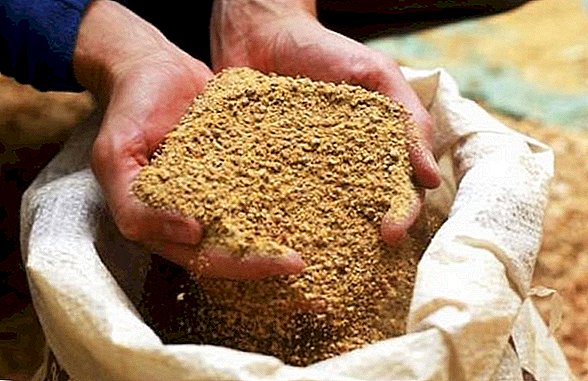 That is why caring farmers add chalk and egg shells to the feeder of layers, it is especially important to do this during the period of active egg laying - from March to September. The winter diet includes mainly home-made porridges with the addition of vitamin complexes: the carbohydrates contained in them will not allow the birds to freeze, and the nutrients will be an excellent prevention of winter avitaminosis, which can greatly weaken the immune system of German layers.
That is why caring farmers add chalk and egg shells to the feeder of layers, it is especially important to do this during the period of active egg laying - from March to September. The winter diet includes mainly home-made porridges with the addition of vitamin complexes: the carbohydrates contained in them will not allow the birds to freeze, and the nutrients will be an excellent prevention of winter avitaminosis, which can greatly weaken the immune system of German layers. - Clean dishes and order in the place of keeping chickens. Nestlings do not have sufficient immunity to various diseases, therefore, violations of the conditions of their housing can lead to the death of young animals. Make sure that the bedding or hay layer under the chicks is always dry, since excess moisture is an ideal breeding ground for harmful microorganisms.
Owners of chickens need to know about the peculiarities of keeping chickens in winter. You also need to take care of good lighting and heating the chicken coop.
Important! Ostfriz gulls fly well. However, their desire to fly can bring a lot of inconvenience to the owners, and can also be deadly for the birds themselves - having flown over the fence, chickens can easily become prey to neighboring dogs or cats.
Advantages and disadvantages
The following indicators are considered to be the main advantages of the Ostfriz Gull breed:
- calm and friendly nature;
- unpretentious care;
- pronounced instinct incubation of eggs.
 There are practically no flaws in such chickens, the main disadvantage of this breed is the high cost of the young due to their rarity.
There are practically no flaws in such chickens, the main disadvantage of this breed is the high cost of the young due to their rarity.
Having decided to grow Ostfriz gull breeding chickens, you can be sure that a calm atmosphere will always reign in your poultry house, and the productivity of the hens will pleasantly surprise you.


 That is why caring farmers add chalk and egg shells to the feeder of layers, it is especially important to do this during the period of active egg laying - from March to September. The winter diet includes mainly home-made porridges with the addition of vitamin complexes: the carbohydrates contained in them will not allow the birds to freeze, and the nutrients will be an excellent prevention of winter avitaminosis, which can greatly weaken the immune system of German layers.
That is why caring farmers add chalk and egg shells to the feeder of layers, it is especially important to do this during the period of active egg laying - from March to September. The winter diet includes mainly home-made porridges with the addition of vitamin complexes: the carbohydrates contained in them will not allow the birds to freeze, and the nutrients will be an excellent prevention of winter avitaminosis, which can greatly weaken the immune system of German layers.
